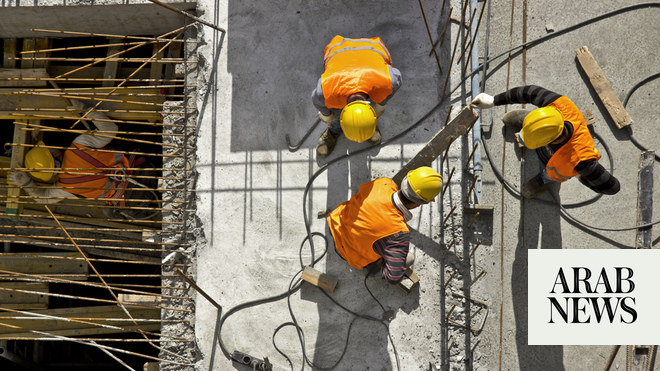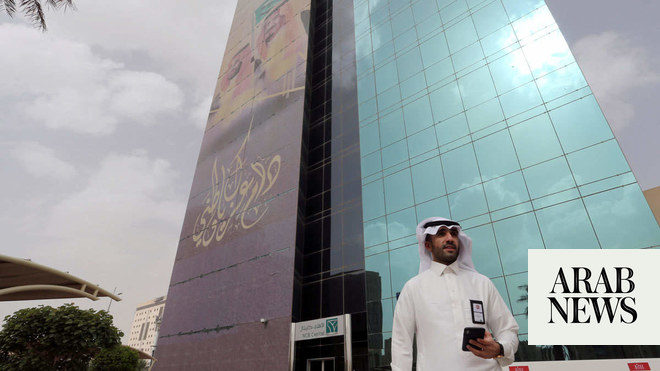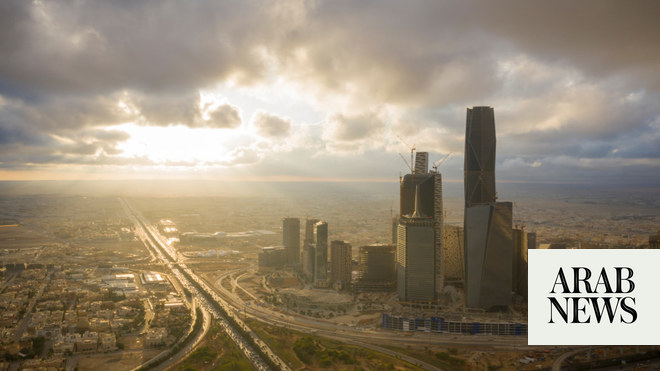
RIYADH: Saudi banks extended loans totaling SR2.65 trillion ($706.3 billion) in February, marking an 11 percent rise from the same month in 2023, according to the latest official data.
Figures released by the Kingdom’s central bank, also known as SAMA, showed an increase in personal borrowings accounted for 32 percent of this growth, while the remaining 68 percent was attributed to the expansion of corporate lending, particularly for real estate activities, as well as electricity, gas, and water supplies.
Real estate financing for corporate dealings specifically surged by 26.4 percent in the second month of the year, marking the highest annual growth rate in 9 months, reaching SR271.18 billion.
This increase can be attributed to the Kingdom’s extensive giga-projects, which have helped counter the impact of rising borrowing rates due to high-interest levels.
Saudi Arabia is also strengthening its power sector, focusing on electricity generation, transmission and distribution, as well as smart grid technologies to efficiently meet the growing demand from residential and commercial consumers.
The shift toward cleaner environmental sources like solar, wind, and bioenergy, supported by favorable government policies and global diversification efforts, is expected to drive advancements in renewable energy capacity according to the American International Trade Administration in a January commercial guide.
Personal loans, which include all types of credit provided to individuals, amounted to SR1.26 trillion, showing an annual rise of 7.2 percent.
The fast-paced progress of digitalization, leading to quick lending and approval procedures, could have played a substantial role in personal loan expansion.
An additional factor could be the need for residential properties from expatriates arriving in the Kingdom, along with government initiatives aimed at modernizing the financial system.
In February, lending for real estate constituted the highest share of corporate credit at 19 percent, totaling SR271.2 billion.
Figures released by Saudi Arabia’s General Authority for Statistics earlier this year showed that the Kingdom’s real estate price index witnessed a 0.7 percent increase in 2023, primarily attributed to a surge in residential sector prices.
This underlines the growing need for credit from financial institutions, with average prices in the housing sector rising by 1.1 percent in 2023 compared to the previous year.
This increase was particularly driven by a 1.2 percent rise in land plot purchasing expenses.
Similarly, apartment prices experienced an uptick of 0.8 percent in 2023 compared to 2022.
This figure came as the Kingdom braces itself for more growth in this sector, with CEO of the Kingdom’s Real Estate Authority Abdullah Saud Al-Hammad telling the Future Real Estate Forum in Riyadh in January that Saudi Arabia is undergoing significant transformations in this sphere.
Lending for real estate in February was followed closely by wholesale and retail trade at 13.32 percent, amounting to SR185.23 billion, with manufacturing activities making up 12.6 percent of corporate lending, totaling SR175.1 billion.
Based on data from SAMA, financing for professional, scientific, and technical activities soared by 56 percent, hitting SR6.49 billion, marking the highest growth rate among sectors.
Education loans also showed robust growth, with an annual increase of 31 percent to reach SR6.17 billion. Additionally, financing for administrative and support service activities rose by 29 percent, totaling around SR35 billion.
Although the lending share for the scientific and education sectors remains low, the Saudi government recognizes its crucial role in the Kingdom’s transformation. Various initiatives aimed at fostering innovation and scientific thinking may have contributed to the steady growth of lending provided for these sectors by financial institutions.












